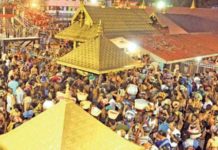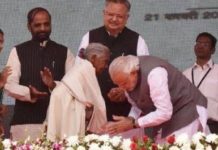This article deals with the important events regarding the whole conflict between Israel and Palestine. A few areas you might find sketchy, in this case do post and comment and we’d be much obliged to reply.
The Arab-Israeli conflict or the Israel-Palestine conflict – is the longest ongoing conflict in the world today. It has claimed lives that are unnumbered; millions and millions of dollars are spent due to this conflict each day.
At the outset, there should be a few fundamental notions that need to be set right:
- The conflict is not a secessionist one.
- The Indian rules of engagement, i.e “non-violence” and “status-quo” apply no-where else. Least of all in this conflict.
- As much as the media might try to feed it into you – there is no homogeneity in this conflict – which is what makes it very complex. It is not a Muslim-Jewish conflict. In fact, it is a conflict between Arabs and Zionists. The former are an ethnic denomination with a majority of Muslims, but a sizeable chunk of Bedouins, Druze and Coptic Christians. The latter are Jews who believe in their eternal right to return to the “promised land” – as promised by their religious text. However, not all Jews can be classified as Zionists and not all Zionists are Jews.
- Religion plays a significant role, but not the primary one. For example, the holy city of Jerusalem, its importance to all three Abrahamic religions – Islam, Christianity and Judaism, and consequently its control have been a result of wars since ages
- The author is, and will remain, radically pro-Palestine. However, this article is as objective as can be expected for an article on General Knowledge (and not one for the editorial page). All sources, for your assurance will be listed in the end.
Now that we are clear. We’ll start with a very brief history of the formation of the identities of Palestinians and Israelis. After which, we shall look at the modern conflict, the various wars, attempts at peace and the present situation.
British Mandate & The Balfour Declaration (1914-1918)
What is now called the “Middle East” was under the control of the Ottomon Sultans, who ruled from Turkey. During WWI, the Sultans sided with Germany (and against the British), as was obvious, the victors divided the spoils of war. In exchange for Turkey’s independence, the areas comprising of historical Palestine, Syria, Lebanon and Jordan were divided between the French and the British. This was done under the auspices of the League of Nations – with Palestine falling under the control of the British.
Interesting to note here is the “Arab Revolt” – the British vaguely promised the Arabs an “Arab homeland” in exchange of support for the war effort, essentially, a revolt against the Khilafah (symbolic of Muslim unity) in exchange of an Arab State (symbolic of ethno-religious unity). This revolt is the result of the establishment of most Arab states that exist in the Middle East today – including oil rich Saudi Arabia, war-torn Iraq and the tiny Bahrain. The revolt ended in 1917, in 1918 – the British Foreign Secretary James Balfour declared Britain’s official support to the country’s Jewish community for a Jewish “national home” in Palestine. The Arabs were fooled but were content with their own little territories and legitimacy in the eyes of the west. The Jews were ecstatic, and this declared started what could be known as Aaliyah or migration to the Jewish homeland.
Interesting here, is also the British Uganda Programme that offered the Jewish communities of Europe refuge from the persecution that it was facing in Russia and other countries. Under this program, the Jewish would be offered a “home land” in what is now Kenya and Uganda – the offer was rejected. Hence, the “justification” of a homeland to protect the community from further persecutions falls flat on its face, had the community really wanted refuge – they would have accepted the larger, and much easier terrain of Africa – they instead chose an already inhabited desert land.
The migrations continued, much to the anger of the native Arab communities which showed itself in the 1947-48 civil war between the Jews and the Arabs.
Establishment of the Jewish State of Israel, the war and the armistice
The Holocaust ensured a constant stream of Jewish migrants to the land. Resulting in a strong Jewish community, that was now capable of competing with the indigenous Palestinian Arabs. A UN Partition Plan was awarded, under which the Holy City of Jerusalem would be run by an international government, and the rest of the territory would be divided between Arabs (43.53%) and Jews(56.47%). The Palestinian community rejected this plan as it ignored the rights of the indigenous, original habitants of the land and awarded a larger percentage to the Jews. However, the Jewish community accepted the plan. The plan, alas, could never be implemented as in 1948, the Jews independently declared a separate “State of Israel” – this declaration resulted in 5 states (Lebanon, Syria, Jordan, Egypt and Iraq) unilaterally declaring war and refusing to recognize Israel’s “right to exist”.
This war is called The Catastrophe or Al-Nakba by the Arabs, and Israel calls it its war of independence. The war resulted in Israeli supremacy, and armistice agreements were signed with Jordan, Egypt, Lebanon and Jordan. These agreements gave Israel about 74% of the control of Mandatory Palestine. The Arab obstinacy and refusal to talk to the Jews has only continued to harm common Palestinians – who have been side-lined throughout the conflict. The war also resulted in an exodus of Palestinians from lands that were now occupied by Israel. This exodus has continued to this day – as more and more territory was annexed by Israel – numerous “packs” of Palestinians began migrating to other Arab countries. Even to this day, the Palestinian side has demanded that any peace agreement that seeks a final status and end to the conflict must have the clause of “right to return” – which the Israeli establishment refuses for obvious reasons. Wiki says: “During the 1948 War, around 10,000 Jews were forced to evacuate their homes in Palestine or Israel, but in the three years following the war, 700,000 Jews settled in Israel, mainly along the borders and in former Arab lands. Around 136,000 came from the 250,000 displaced Jews of World War II. About another 270,000 came from Eastern Europe. The bulk of the rest—around 300,000 people—constituted the first wave of a total of 750,000 or more Jews who over the course of the next thirty years would flee an increasingly hostile Arab world“
The Six Day War, 1967
If the 1948 war was a Catastrophe for the Arabs, I’m clueless as to what we’d call the 1967 war. The following is the concise and succint narration provided by BBC:
From 1948 to 1967, the West Bank, including East Jerusalem, was ruled by Jordan. During this period, the Gaza Strip was under Egyptian military administration. Israeli troops captured Egypt’s Sinai peninsula during the 1956 British, French and Israeli military campaign in response to the nationalisation of the Suez Canal. The Israelis subsequently withdrew and were replaced with a UN force. In 1967, Egypt ordered the UN troops out and blocked Israeli shipping routes – adding to already high levels of tension between Israel and its neighbours.
In a pre-emptive attack on Egypt that drew Syria and Jordan into a regional war in 1967, Israel made massive territorial gains capturing the West Bank, Gaza Strip, Golan Heights and the Sinai Peninsula up to the Suez Canal. The principle of land-for-peace that has formed the basis of Arab-Israeli negotiations is based on Israel giving up land won in the 1967 war in return for peace deals recognising Israeli borders and its right to security. The Sinai Peninsula was returned to Egypt as part of the 1979 peace deal with Israel.
From being a victim, Israel became an aggressor. Both in 1967 and the “Water Wars” that preceded (involved the destruction of a dam being built by Syria and Jordan by the Israeli forces, aggression against Egypt for the purpose of occupying the Sinai peninsula, and ensuring passage through the Strait of Tiran. However, the biggest loss was to the Arabs – who lost Jerusalem (then, under Jordan’s control) and most of its land. Any peace process, according to the Arabs must be on the assumption that Israel would withdraw and control only areas that it controlled before-1967. However, Israel rejects this idea and believes that Jerusalem is its eternal capital. This act of annexation of various regions is not recognized by the International community, not even the United States of America. Israel is determined that Jerusalem be its undivided capital, while Palestinians are seeking to establish their capital in East Jerusalem. (BBC)
Other Important Events:
- Lebanon War, 1982 – Read about it here. It was prominent for another reason – the Sabra and Shatilla Massacre (3,500 dead under IDF’s watch), read about it here. The Massacres were depicted in the Israeli movie “Waltz with Bashir” – which is an animated documentary
- The First Intifada (1987-1993) started which was a Palestinian uprising against the Israeli occupation in the Palestinian Territories. This was started due to the growing frustrations of the Palestine’s, the Egyptian withdrawal from Gaza strip and weakening of Jordanian claim on west bank. The uprising began in the Jabalia refugee camp and quickly spread throughout Gaza, the West Bank and East Jerusalem. Despite violent acts, Palestinian actions primarily included nonviolent civil disobedience and resistance movement. There were general strikes, boycotts on Israeli products, refusal to pay taxes, graffiti, and barricades, but the Palestinian demonstrations that included stone-throwing by youths against the Israel Defense Forces (IDF) defined the violence for many. This also led to the formation of Hamas , an Islamist resistance organization. (Rohan Muralidharan Iyer)
- The Second Intifada (2000-2004) – Frustrations that years of the negotiation had failed to deliver a Palestinian state were intensified by the collapse of the Camp David summit in July 2000. Ariel Sharon, then the leader of Israel’s opposition, paid a visit to the site in East Jerusalem known to Muslims as Haram al-Sharif, and to Jews as Temple Mount, which houses the al-Aqsa mosque – and frustration boiled over into violence.
- The Disengagement Plan, 2005 – Israeli PM Ariel Sharon’s government decided to unilaterally evict all Jewish settlements from occupied Gaza strip.
- Israel-Hezbollah War, 2006 – The conflict began when Hezbollah militants fired rockets at Israeli border towns as a diversion for an anti-tank missile attack on two armoredHumvees patrolling the Israeli side of the border fence. The ambush left three soldiers dead. Two additional soldiers, believed to have been killed outright or mortally wounded, were taken by Hezbollah to Lebanon.Five more were killed in a failed rescue attempt. Israel responded with airstrikes and artillery fire on targets in Lebanon that damaged Lebanese civilian infrastructure, including Beirut’s Rafic Hariri International Airport (which Israel said that Hezbollah used to import weapons and supplies) an air and naval blockade and a ground invasion of southern Lebanon. Hezbollah then launched more rockets into northern Israel and engaged the Israel Defense Forces (IDF) inguerrilla warfare from hardened positions. The reaction was said to be disproportionate, and resulted in the deaths of nearly. It left over 1200- 2000 civilliuans dead. Mostly on the lebanese side, including many men, women and children
Attempts at Peace
- In 1993, Israeli officials led by Yitzhak Rabin and Palestinian leaders from the Palestine Liberation Organization led by Yasser Arafat strove to find a peaceful solution through what became known as the Oslo peace process. A crucial milestone in this process was Arafat’s letter of recognition of Israel’s right to exist. The Oslo process was delicate and progressed in fits and starts, the process took a turning point at the assassination of Yitzhak Rabin (by a Jewish fanatic named Yigal Amir) and finally unravelled when Arafat and Ehud Barak (then Israeli PM) failed to reach agreement at Camp David Accords in July 2000. The Israeli negotiation team presented a new map at the Taba Summit in Taba, Egypt in January 2001. The proposition removed the “temporarily Israeli controlled” areas, and the Palestinian side accepted this as a basis for further negotiation. However, Prime Minister Ehud Barak did not conduct further negotiations at that time; and famously declared, without any basis that the “peace process is dad, the Palestinians do not want peace”.
- One peace proposal, presented by the Quartet of the European Union, Russia, the United Nations and the United States on September 17, 2002, was the Road Map for Peace. This plan did not attempt to resolve difficult questions such as the fate of Jerusalem or Israeli settlements, but left that to be negotiated in later phases of the process. Israel did not accept the proposal as written but called out 14 “reservations” or changes before they would accept it which were unacceptable to the Palestinian leadership. The proposal never made it beyond the first phase, which called for a halt to Israeli settlement construction and a halt to Israeli and Palestinian violence, none of which was achieved.
- The Arab Peace Initiative was first proposed by Crown Prince Abdullah of Saudi Arabia in the Beirut Summit. The peace initiative is a proposed solution to the Arab-Israeli conflict as a whole, and the Israeli–Palestinian conflict in particular. Unlike the Road Map for Peace, it spelled out “final-solution” borders based explicitly on the UN borders established before the 1967 Six-Day War. It offered full normalization of relations with Israel, in exchange for the withdrawal of its forces from all the occupied territories, including the Golan Heights, to recognize “an independent Palestinian state with East Jerusalem as its capital” in the West Bank and Gaza Strip, as well as a “just solution” for the Palestinian refugees. A number of Israeli officials have responded to the initiative with both support and criticism. The Israeli government has expressed reservations on ‘red line,’ issues such as the Palestinian refugee problem, homeland security concerns, and the nature of Jerusalem However, the Arab League continues to raise it as a possible solution, and meetings between the Arab League and Israel have been held.
- The Palestinian Authority – the recognized organization that is taken to be the sole representative of the Palestinian people in International forums has recognized Israel’s right to exist. And hence is participating in indirect talks mediated by the United States of America. However, even optimists in the foreign policy quarters are not sure if this shall go anywhere. The PA’s insistence on a complete freeze on settlement building in West Bank and Jerusalem has been disregarded. For more, click here and here
In 2006, Hamas contested the Palestinian Authority elections and won by a great margin. Since Hamas is known for its advocacy of Israel’s ultimate destruction and a Palestinian state “from the river to the sea”, this popular victory was seen as a threat by the United States of America, Israel and the Socialist-pro-western Fatah. Factional war, backed by USA and Israel began for the control of Palestinian territories. Hence, not only subverting democracy and but also the chances of furthering the cause of a Palestinian state. Hamas was successful in routing out Fatah completely from Gaza and today, West Bank is controlled by Fatah while the former is controlled by Hamas. This resulted in a blockade imposed by Israel and Egypt that brought upon Gaza a humanitarian disaster that continues to this day. For more on the blockade – read and the Amnesty International report on the blockade.
In frustration Hamas began launching rockets into Israeli territories of Askhaleon and Sderot. These rockets neither caused damage nor serious casualties. However, instead of easing out on the blockade – Israel launched Operation Cast Lead in December 2008. The military operation resulted in mass destruction of an already failing civilian infrastructure, bolstering Hamas’ authority and legitimacy and most importantly, destroying civilian lives – it is reported that over 2000 people, mostly civilian children and women might have been slaughtered by Israeli airstrikes during the operation. The United Nations appointed South African Jewish Judge, Richard Goldstone to look into the human rights abuses during the Operation. Israel had refused to assist in anyway the investigation of the report, however Goldstone did complete the report and come out scathingly against Israel for violating International Humanitarian Law and Human rights.
The Gaza War created an international outcry which soon became a global movement. It involves a policy of Gandhian methods of treating Israel as an apartheid state and hence boycotting products. See here for the Boycott, Divestment and Sanctions movementhttp://en.wikipedia.org/wiki/Boycott,_Divestment_and_Sanctions.
A similar vein of the movement was also responsible for the first ever Free Gaza Flotilla, which intended to break the blockade and provide Gaza with important humanitarian material. The Israeli military however, raided the ship in international waters and used arms, resulting in teh death of 9 activists on the Mavi Marmara. For more, visit here
Conclusion
The above paragraphs are nothing but a mechanical representation of events, facts, and occurrences. The struggle that each and every common Palestinian has put up since the last 7 decades can never be put eloquently. This is not a comprehensive article and leaves out on issues ranging from human rights violations of Israel regularly to the situation in Gaza in detail. It can not be denied that attempts at peace have never been made wholeheartedly. As is always, peace between nations always requires a compromise – but when one powerful nation imposes a compromise on the other, it is not peace – but control. That a whole nation has been rendered stateless speaks enough about the condition that Arabs in those lands live in. I could not cover the issue of the West Bank barrier, the daily human rights violations and humiliations that common people of the occupied territories have to face.
It was just two days back that a Gandhian protester in Bil’in was arrested and detained. The corrupt and irresponsible leadership of PLO is the reason why Hamas has seen a rise in its democratic popularity. The USA’s refusal to recognize a legitimate elected government simply because it is against Israeli interests speaks of the hypocrisy that “American democracy and values” are a big farce.
As for India – it was one of the first of the non-Arab countries (some say even before Pakistan) to recognize the PA’s membership in the United Nations. Until the 1990s, India had no diplomatic exchange with Israel and remained steadfastly behind Palestine. Today, Israel and India are strange bedfellows – the former being the latter’s second largest Arms supplier (first being papa, Russia) and both share great amount of intelligence, training and resources in the areas of defence, R&D and even agriculture. India has almost abandoned the Palestinians, but for, in name.
Put yourself in the place of the Palestinian people: displaced on their own land, deprived of human dignity, human rights, betrayed by your own leaders and the abandoned by the world. It is difficult not pick up that stone and throw it at the tank.
To a free Palestine! To that undying spirit of dissent and struggle!















The software is giving me pains in all the wrong places, here are the main sources that I’ve used
Wikipedia
BBC
For further reading:
http://dissidentvoice.org/2010/02/human-rights-abuses-in-israel-and-occupied-palestine/
http://www.hrw.org/middle-eastn-africa/israel-and-occupied-territories
http://news.bbc.co.uk/2/hi/middle_east/3111159.stmhttp://www.ifamericansknew.org/download/origin_booklet.pdf
http://en.wikipedia.org/wiki/Israeli_checkpoint
Well written. But I have just one doubt. Where do the Israelis buy their oil from? Since the Middle East would be the most uncooperative with them.
This article compelled me too dig deeper into this issue. Gross injustice has been done to the Palestinians.
But sometimes I think that in this world of conflicting interests, it was Israel who actually rose to the occasion and built itself into a super-power (however, indiscriminate, cruel and unjust) that it is today. Certainly, Israel holds the cards, at least in the present times and its obstinacy faces no real challenge.
Sad.
Missed the important Ramadan War: http://en.wikipedia.org/wiki/Yom_Kippur_War
Basically, this boils down to whether one people can simply come and displace another on grounds that the Old Testament had made ISRAEL for the ‘Believers’ in some long gone era. There is no logic to the entire conflict – why should religion be the grounds for nation building in the first place?
Agreed that Jews did suffer grossly in face of Nazi Anti-Semitism. This should NOT give them the right to sieze land.
On the other hand, the wikipedia write-up on this ( http://en.wikipedia.org/wiki/Israeli%E2%80%93Palestinian_conflict#Camp_David_Summit_.282000.29) says that Arafat was offered a deal for carving out two states out of the present territory of Israel at the Camp David summit. He rejected it and never came up with an alternate proposal. Is that right?
Padmini, you don’t expect the Palestinians to accept any offer for peace as long as there is peace? A Palestinian state that ignores the refugees’ (and their children’s) right to return to the new, independent and free nation, is not a Palestinian state at all. Besides, Israel refused to budge on the issue of Jerusalem – without which the new State of Palestine is like India without Delhi – impossible, unimaginable.
You can’t burden one side of the conflict to compromise everything while the other side gets away with almost anything.
The wiki link you provided says “The Palestinians rejected this proposal on grounds that the annexations would cut existing road networks between population centers. They also claimed that they were offered only disconnected cantons in the West Bank.”
http://www.mideastweb.org/campdavid2.htm
Check the conditions imposed by Israel: No alliance, no army and no this no that. Peace is not the absence of violence.
I agree. Peace is not the absence of violence.
Even Mahatma Gandhi was again the Israeli occupation. He said that Palestine belongs to the Arabs just as England does to the English and France to the French.
So basically what do the Arabs want? And how is to be met without in turn creating a generation of Israeli refugees. Complex problem indeed.
In my opinion, the best solution is, what is called the “Arab Peace Initiative”. Israel is the country that it was pre-1967 and Palestine is what will be left after that. There will be no Israeli refugees, as there’ll be enough land for both the nations.
Of course, the other is war. That isn’t going anywhere. So we’re stuck, either way.
Thanks for the information on the ‘Arab Peace Initiative’
If such a proposal exists, why hasn’t it been implemented already? (this is naivety for you)
Padmini, Israel rejected it. And they blame the Palestinians for not genuinely accepting peace. I am adding two FP links to the GK Doses page. They are a must-read (not so much for CLAT, but for your understanding).
And I wanted to appreciate the fact that your basic assumptions are all perfect. The question is that can some community’s belief be a genuine consideration for establishing a nation on someone else’s land. No matter how much propaganda you read – always come back to this question, and it’ll do you good.
Thank you so much. I just wanted to say, while this website does help us for our CLAT preparation, at a more basic level, it’s really giving us a platform to question, debate and ponder over deeper issues.
I’m so glad that my questions, even those which don’t directly pertain to CLAT are answered here.
http://www.economist.com/node/17800151/comments#comments
I’d just like everyone to go through this…it’s relevant!
i feel for both the Jews and Palestinian’s ……the Jews were driven out of Germany and thus they had nowhere to live……well….they should have accepted when they were given Kenya and Uganda….and instead they wanted the already inhabited Arab land….now the Arabs are being driven out of their land….Jews should know it better than anyone else….of how it is to not have a home of your own…..now atleast jews and arabs must live in peace….and share the land equally!
Oh god. What a mess the world is in.
Thanks for the article, it was really helpful, though I’m nothing close to “pro-palestine” at all.